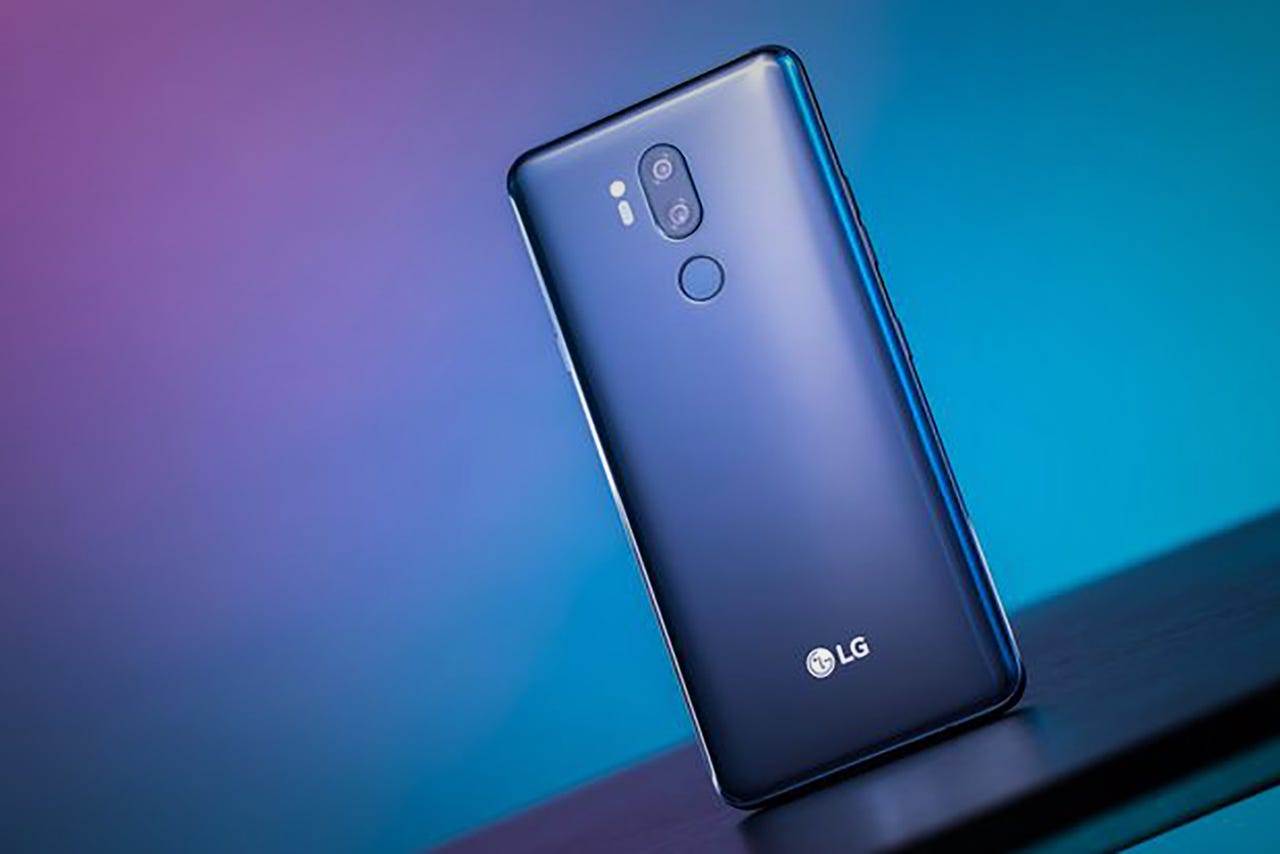Work by phone: 11 best smartphones for business users

Samsung Galaxy Note 9
The Note series has always had an enterprise focus, and the Note 9 is no exception.
After reviewing all the details on the $999 Note 9 and spending some time with it, we found that the Bluetooth S Pen experience, whopping 6GB/8GB RAM and up to 512GB storage options, multiple security options (from iris scanning to Google Smart Lock), fast charging and wireless charging, built-in Samsung Pay, and support for Samsung DeX (no dock required) were among the many reasons why the Note 9 is the absolute best phone for business.
Also: Nine reasons the Samsung Galaxy Note 9 is best for business
Samsung Galaxy Note 8
If you want to save some money and pick up last year's Note 8 instead of this year's refresh, it's still a great choice for business users. Again, the S Pen experience is wonderful for note-taking, real-time translations, and more -- though, admittedly, the new 2018 S Pen has been greatly improved. We also liked that the Note 8 kept the headphone jack, despite last year's trend away from it, and were impressed by the phone's support for Gear VR and DeX, among other things.
It's clear that Samsung likes to push smartphone technology, and the $599 Note 8 is a prime example.
Also: 10 reasons the Samsung Galaxy Note 8 is best for business
Samsung Galaxy S9/S9+
Either of Samsung's 2018 S flagships are good for business, but if we had to choose, the $799 Galaxy S9 Plus is better. It has a large 6.2-inch Infinity display, and up to 6GB of RAM and 64GB internal, with microSD card support for nearly unlimited storage.
Those Edge panels also offer maximum efficiency. Plus, there's broad carrier availability, and, once again, support for DeX. When we reviewed the device, we also liked the Bixby experience, finding it especially useful for those performing field work or who need to have both hands free at times. You can also use Google Assistant, if you prefer, and get the best of both worlds.
Also: 10 reasons the Galaxy S9 Plus is better than the Google Pixel 2 XL for business
Apple iPhone X
We usually get bored with an iPhone after a few weeks and move along to more exciting Android smartphones, but there is something about the iPhone X that excites us every time we use it.
First off, it feels like $1,000 phone. Apple employs an impressive OLED panel from Samsung, for instance, and we enjoy the phone's fantastic camera performance, new gesture-based user interface, and its ecosystem, which includes AirPods, Apple Watch, and apps like iMessage. The Apple iPhone X, like every other smartphone on the market, is not absolutely perfect -- we miss having a headphone jack -- but it's darn close.
Also: One month with the Apple iPhone X: More powerful than a Plus
Apple iPhone 8/8 Plus
Those of you who want to use an iPhone at work but don't want to pay the iPhone X's premium price tag and still like a front home button, then look no further than Apple's other 2018 models: the iPhone 8 and 8 Plus.
In our review of the standard iPhone 8, we found it to be more of the same, but better in just about every way. Yes, with the iPhone X, Apple finally broke the mold, but the $499 iPhone 8 is a worthwhile upgrade if you're coming from Android or anything older than the iPhone 7. However, if you do have the iPhone 7 and want to upgrade, I'd suggest either getting the iPhone X or waiting for the next crop of devices, as Apple will likely announce them in September 2018.
Huawei P20 Pro
This may be the best Android smartphone of 2018.
Similar to flagship phones from Samsung and LG, there are a ton of settings available on the $735 Huawei P20 Pro, and we continue to discover new things on a regular basis, such as a "Darken interface colors" toggle buried in the battery settings. But there are several reasons to consider the P20 Pro for business, from its triple Leica camera setup on the back, to its stunning design with unique gradient Twilight and Pink Gold colors. We also like the 6.1-inch OLED display, innovative Kirin 970 processor with a Neural Processing unit, water resistance, off-screen navigation buttons, and knuckle -- yes, knuckle -- functionality that lets you easily take screenshots or launch apps.
Also: Huawei P20 Pro: The most exciting phone of 2018 is great for business too
Google Pixel 2/2 XL
We couldn't not include Google's own smartphones in this lineup.
The latest Pixels, the Pixel 2 and Pixel 2 XL, are the ultimate Google devices. They showcase the company's software initiatives -- whether it be Daydream for VR, Google Assistant, or the Android platform as a whole. It's super impressive, especially when you consider this is only the second year in which the company has taken the approach of providing a robust Google experience seriously. Plus, as Google continues to develop the Pixel line, it's putting its own spin on Android and providing something that naturally works with the entire Google ecosystem.
In our review of the $850 standard model, we said we really like that there's no fluff and no bloat... just Google and its myriad of services. And if there's one thing Google does really well, it's services. It just happens to have hardware now to back it up.
Also: Here's why your Pixel 2 is about to start taking better photos
LG V35 ThinQ
What's not to love about the super fast $650 LG V35 ThinQ?
It's water resistant, has a headphone jack, and comes with a brilliant OLED screen and long-lasting battery. However, the phone is among LG's priciest to date. If money is no object, then you'll appreciate that the V35 ThinQ is fast, responsive, and reliable. Our sister site CNET reviewed it and found it to be as fast, if not faster, than the Galaxy S9 Plus. The V35 also easily beat out the Pixel 2 XL with day-to-day tasks like launching apps, scrolling through a web page, and firing the camera's shutter. Plus, in its battery testing, the phoned exceeded the Pixel 2 XL's 14-hour time and the LG G7's 12 and a half hours.
BlackBerry KEY2
There are plenty of options available in the Android world, but there are a few unique aspects to the $650 KEY2, including, obviously that QWERTY keyboard.
Sure, after a few years of on-screen keyboards, it definitely takes some practice to use a hardware QWERTY keyboard again. That said, it is an excellent keyboard with good spacing and tactile feedback, shortcuts galore, intelligent prediction, and touch sensitivity that make it wonderful for scrolling without touching the display. We also like the phone's security via the DTEK app, which is designed to raise your awareness of security on the phone, and the Private Locker, where a secure file explorer, secure photo gallery, and Firefox Focus reside with the option to add other apps.
Plus, let's not forget the centralized communications platform provided by BlackBerry Hub, the Convenience key with up to 52 shortcuts available, and that Privacy Shade and Redactor tool.
Also: Seven reasons the BlackBerry KEY2 is good for business

LG G7 ThinQ
Speaking of the $650 LG G7 ThinQ, it offers everything you could want with the Snapdragon processor, microSD expansion card, high level of water and dust resistance, MIL-STD 810G drop protection, wireless charging, dual rear cameras with wide-angle lens, reasonable $750 price, US wireless carrier support, attractive color options, and great audio performance.
It is also designed well with a width that makes it fit comfortably in one hand and a weight that is lower than most other phones. The LG G7 even has a dedicated Google Assistant hardware button with Google Lens integrated into the camera app. LG doesn't get much respect in the mobile space, but the LG G7 is a satisfying smartphone that impresses.
Also: One month with the LG G7: As competition stumbles, the G7 rises to the occasion
OnePlus 6
The OnePlus 6 sold more than one million phones in just three weeks, which is quite a feat considering not a single US carrier had the phone in stores at launch, and it was only sold directly from OnePlus. However, CNET recently reported that the OnePlus 6T will launch with T-Mobile, its first US carrier partner, so that might soon change.
Either way, we loved the phone's tactile buttons, system gestures, nearly stock Android experience with speedy updates, minimal bezels, and relatively low $529 starting price.
Also: Two weeks with the OnePlus 6: Useful buttons, gorgeous design